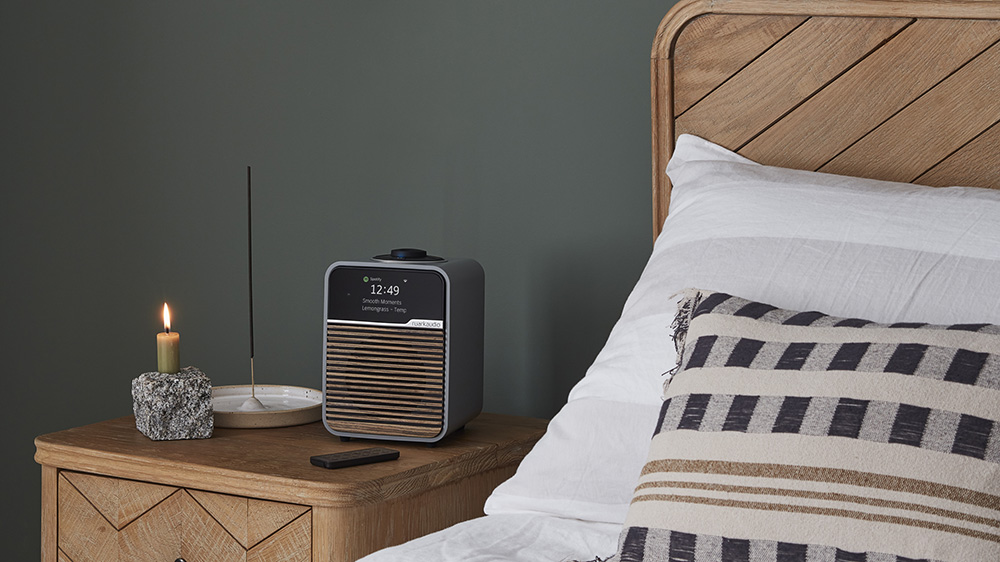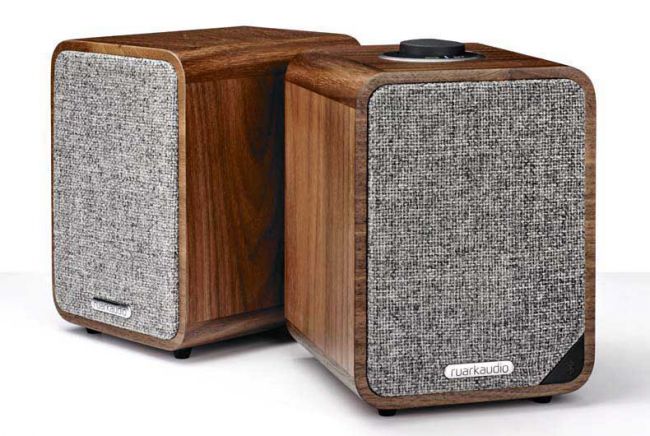I want a smaller, cheaper KEF LSX II rival to supercharge my desktop hi-fi - and Ruark could have the answer
Ruark's new radio has a key upgrade I want to see on its next speaker

This week Ruark unveiled its rather swish-looking R1S radio, which adds to the firm’s widening range of small hi-fi products.
I haven’t had a chance to listen to the new Ruark R1S yet, but considering our positive experience reviewing the firm’s other radios – which include the five-star Ruark Audio R1 Mk3 – I and the wider What Hi-Fi? team has high hopes for it.
For me, this is mainly because the one-box R1S looks set to fix one of the only problems I have had using Ruark’s other affordable radios and smaller speakers – their lack of network streaming. It is becoming increasingly hard for manufacturers to get away with omitting streaming support these days, even in the more budget products. And Ruark has clearly recognised that in its inclusion in the R1S.
This is particularly true of the Ruark Audio MR1 Mk2, which for years were my go-to desktop stereo speakers and the ones I would pair with my turntable.
To be clear, these are still very good speakers, and the reasons I bought them and stuck with them for so long are pretty simple and hold true to this day. Originally I loved them as their dinky dimensions and lower-than-expected price meant they were the best option my 20-something-year-old self could afford that would fit into my tiny shared flat.
As an added perk they look lovely, featuring a wonderfully premium wooden finish, and an über-cool woven retro grille. But most importantly, they sound pretty darned nice, even by today’s standards. Our audio experts agree with me on this point, having given them the best desktop speaker crown at every What Hi-Fi? Awards since 2017 (a year after the speakers launched). That's right, nothing has come close to beating them in that many years.
Our review says it all:
The latest hi-fi, home cinema and tech news, reviews, buying advice and deals, direct to your inbox.
“Gorgeous looks, streamlined design and features, sound quality that’s been improved in every way – the Ruark MR1 Mk2 shoots straight to the top of our favourites list.”

Trust me when I say, our team doesn’t give glowing praise like this often and that’s a key reason I stuck with the Ruark’s so long. But my move into a house, a process that saw me re-evaluate all my hi-fi and home cinema kit, meant that the lack of network streaming really hit home.
Bluetooth is fine for casual listening, but when non-"proper hi-fi" companies are bashing out similar home speakers with the feature, such as the Sonos Era 100 we gave a perfect five-star score to earlier this month, its absence undeniably ages the product.
Having used products like the Era 100 for a while, I have become too used to using things like Spotify and Tidal Connect as my primary streaming service at home even when working on my home computer.
You can see a proper guide on why network streaming is such a big deal in our Tidal Connect guide. But the Cliff Notes is that streaming over wi-fi can be a gateway to much higher streaming quality than you can get via Bluetooth. Services such as Connect take this a stage further, letting you stream audio directly from the provider's servers to the device/speaker, further improving the amount of data that can be sent, without losing much along the way.
On a speaker that sounds as good as the MR1 Mk2, its absence is an omission that I am finding harder and harder to ignore.
This realisation then got me on a wider journey about quite how much I would like Ruark to deliver a more holistic update to the MR1 Mk2 (it is knocking on for six years old now, after all) and ponder what other features I would want on my imaginary MR1 Mk3.
There are plenty of open goals to be had. For example, given the fact the Mk2 is still being marketed as a desktop and TV speaker setup, it would be an easy win for Ruark to add HDMI and USB connectivity. Even if it doesn’t add HDMI 2.1, the latest standard, for Dolby Atmos, just having more connection options than optical would make the speakers much more flexible for home office or cinema use.
This would also let the new MR1's target an underserved market, if Ruark manages to keep its price down, with most of the competing products, the KEF LSX II, say, that are similar to the one I'm picturing in my head costing much more.
And it’s this train of thought that has kept bothering me whenever I have gone home and looked at the currently empty slots next to my TV and turntable and computer - at which point I feel a slight pang for Ruark to update one of my favourite sets of desktop speakers.
MORE:
These are the best desktop speakers money can buy
Check out our picks of the best bookshelf speakers
Need a radio? These are the best DAB radios we've reviewed

Alastair is What Hi-Fi?’s editor in chief. He has well over a decade’s experience as a journalist working in both B2C and B2B press. During this time he’s covered everything from the launch of the first Amazon Echo to government cyber security policy. Prior to joining What Hi-Fi? he served as Trusted Reviews’ editor-in-chief. Outside of tech, he has a Masters from King’s College London in Ethics and the Philosophy of Religion, is an enthusiastic, but untalented, guitar player and runs a webcomic in his spare time.
